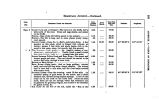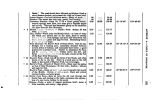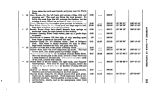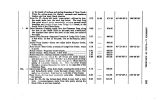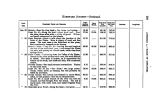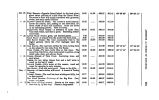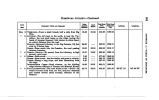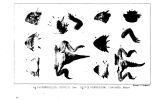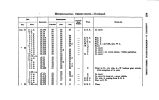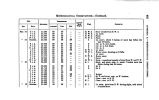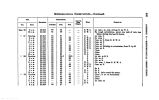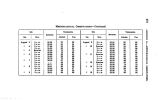| OCR Text |
Show LITTLE SANDY- VALLEY OF THE LITTLE BLUE. 27 above the carboniferous series. The white sandstone was very fossiliferous. Thursday, June 14.- Ther. at sunrise, 66°; Bar. 28.58. Heavy dew; wind N. W., quite fresh and cool. Leading Little Sandy, the road follows the ridge between it and the Little Blue, over decomposed red sandstone. Halted to noon on the right bank of the Big Sandy, a tolerably bold stream when the water is high; but at present it stands only in pools, on a bed of white sand two hundred feet in width. The afternoon march was on the south side of the " ridge, which forced us to cross the heads of numerous ravines and small runs putting into the Blue, upon one of which we encamped, having accomplished twenty- one miles. We met to- day, for the first time, several new plants, indicating an approach to regions of a different and less fertile character than those we had hitherto traversed. The aloe and the prickly- pear were found in the sandhills, as were the Oommelina and the saxifrage. The prairie- rose, AmorpAa, Oenothera, and Artemisia abound. A blue lupine and a white mallow were also gathered. In the afternoon we met Major Belger, of the quartermaster's department, on his return from Fort Kearny, with an escort of dragoons. He had fallen in with a band of five hundred Pawnees, who, however, did not attack him. He confirmed the rumour that a force had been sent from the fort after them. A fight had taken place on the north side of the Platte, between the Indians and two parties of emigrants, in which the former were defeated, with the loss of their chief, five others killed, and six wounded; the whites having one man wounded and a horse killed. A large number of plover were seen to- day. Monday, June 18.- Bar. 28.13; Ther. 86°. We have been travelling for the last three days up the valley of the Little Blue. Where we first struck it, the stream is eighty feet wide, apparently deep, very crooked, with a swift current. It is fringed, sometimes on one side, sometimes on the other, with a narrow belt of cotton-wood and willows. The valley presents a tolerably uniform appearance, bounded by ridges, seldom more than a mile or two apart, the intervening bottoms sloping gradually down to the river. The grass is generally very abundant, and prSle ( the common scouring* rush) is found in great plenty. Our mules ate it with avidity. In the morning we passed a government ox- train, laden with provisions for the new post about to be established in the neighbourhood of Fort Hall. It consisted of thirty- one heavy wagons, |
































































































































































































































































































































































